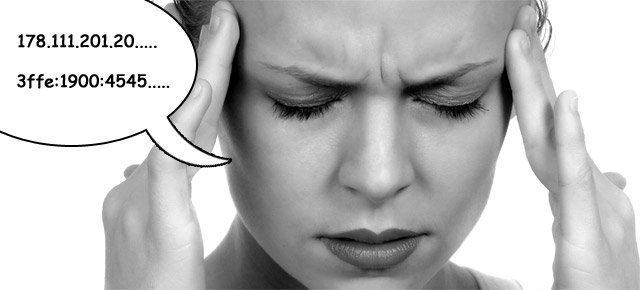In recent weeks many network users will have heard about the switch from IPv4 to IPv6 website addresses. But what do IPv4 and IPv6 mean?
First of all: What is an IP address?
Without going into too much detail, an IP address is the identification of a physical machine on the network.
All websites have their own IP address in the classical form (IPv4) xxx.xxx.xxx.xxx, four blocks of 3 digits each. Most sites with shared hosting share the same IP address.
Your computer also gets an IP address from your ISP (Internet Service Provider) when you connect to the Internet. This is usually a dynamic address which is then assigned multiple times to multiple users (but never two or more simultaneously) to uniquely identify your computer within the web.
What does IPv4 mean?
As already mentioned, an IPv4 address consists of 4 blocks of 3 digits. Each block takes on decimal values ranging from 0 to 255 (so 256 values in total), 256 is equal to 28.
The total possible combinations are then given by the product of the maximum number of unique addresses that each block can hold, so 28*28*28*28 = 232, technically we could say that IPv4 uses 32 bits for addressing.
This figure is approximately 4.3*109 = 4,300,000,000. However, this number of unique identifiers starts to be too limited given the exponential growth of devices that are accessing the internet.
And IPv6?
So to solve this problem a new protocol called IPv6 has been created. This protocol uses 128 bits, so in practice we no longer have 232 addresses but 2128 which corresponds to approximately 3.4*1038 useful addresses (try to write 34 followed by 37 zeros to get a sense of the proportion involved!). This obviously makes it possible to handle a much larger number of unique addresses.
What does an IPv6 address look like?
8 blocks of 4 hexadecimal digits each, separated by colons, for example: 3ffe:1900:4545:0003:200:f8ff:fe21:67cf is a valid IPv6 address.
What changes for users?
Not a lot. The transition from IPv4 to IPv6 is virtually invisible to most users (it’s already begun!). Only those who have rather antiquated devices may have to download additional software that allows the conversion of addresses. But, taking into account the short lifetime of technology today, we certainly won’t be seeing any dramatic “millennium bug” type scenes.


